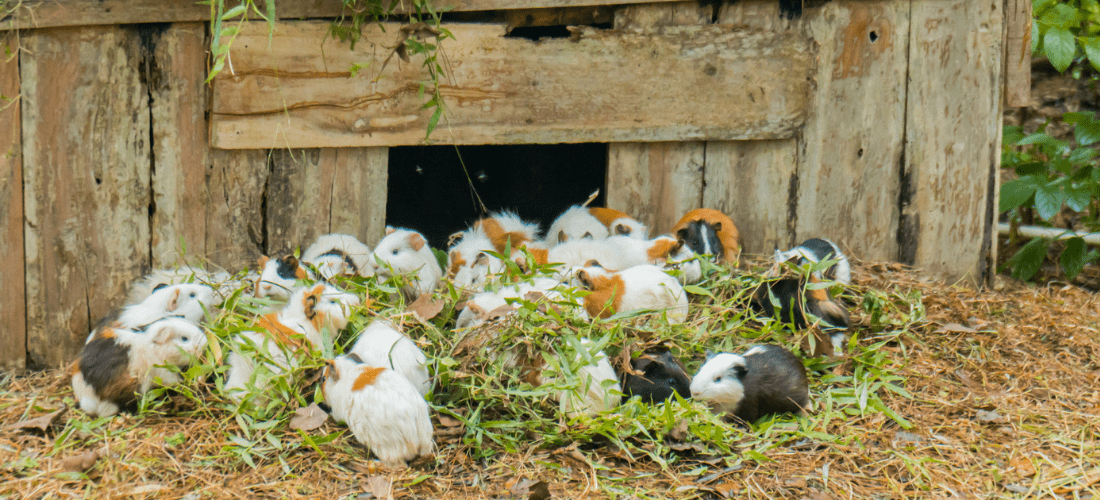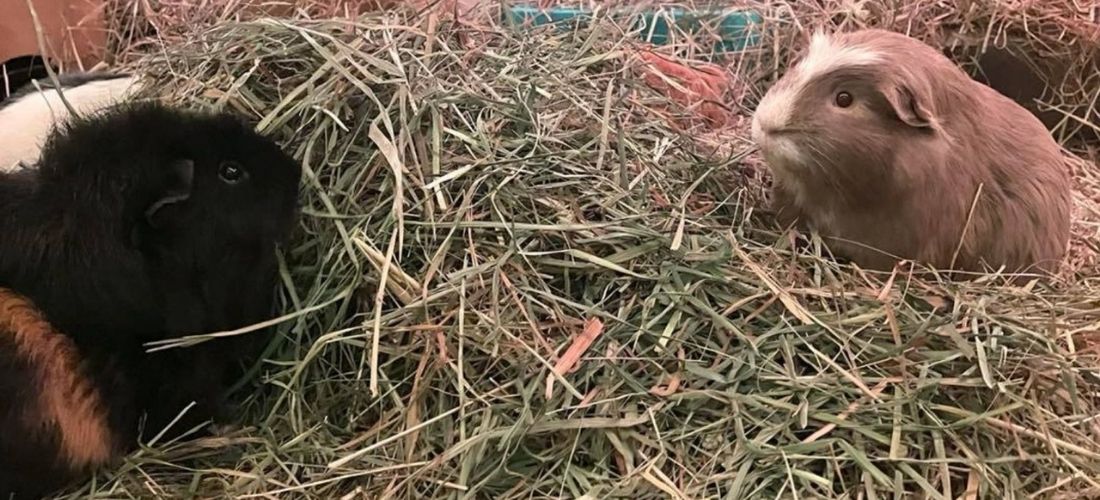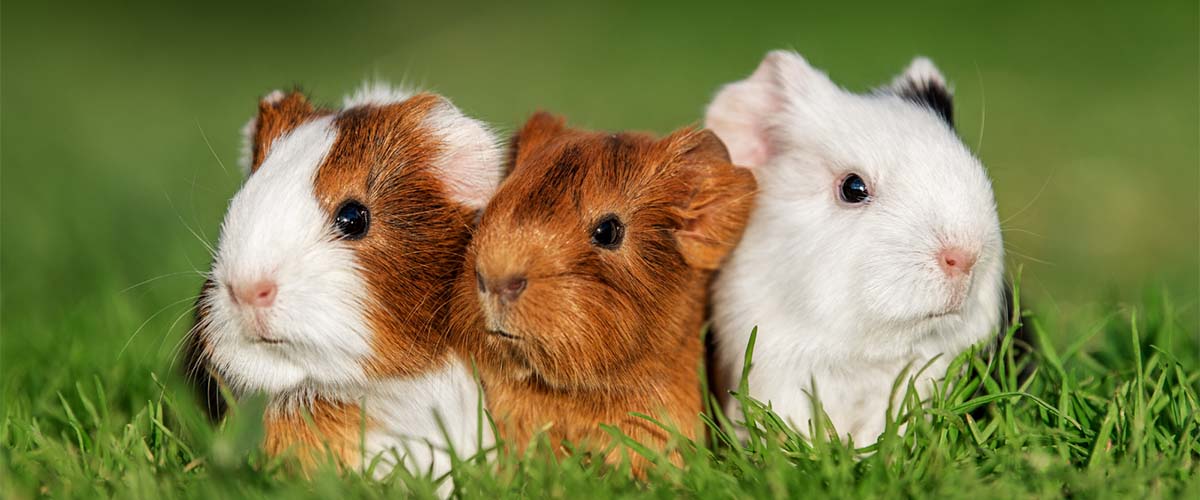Are guinea pigs good pets?
Guinea pigs can make wonderful pets but it’s important to understand all their needs before bringing any home. They love interacting with other guinea pigs, so should be kept in groups of three or more. They are relatively simple to feed – eating a combination of hay, pellets and fresh veg.
They need lots of space to explore, burrow, and forage for food, and can happily live indoors or outdoors as long as they are protected from predators and extreme weather. While they don’t tend to enjoy being handled, they are very entertaining to watch and often appreciate gentle strokes and treats from your hand. Guinea pigs can be vocal, often expressing themselves with squeals of delight when they see their owners. To keep your guinea pigs happy and healthy you’ll need to give them daily attention, regular health checks, and clean their living space regularly.

Guinea pigs are very friendly, sociable animals that need to live with other guinea pigs to stay happy and healthy. In the wild they live in small family groups, so as pets they should be kept in groups of three or more.
Guinea pigs can be kept in single-sex groups (all males or all females), or a mixed group, as long as the males are neutered – as females can get pregnant as early as three weeks old. We recommend getting a group of guinea pigs that are already established friends.
If you’re left with a single guinea pig after a loss or already have a single guinea pig at home, you’ll need to find them a friend (or two) to keep them happy. For detailed information on how to introduce guinea pigs to each other read our dedicated page.
Can guinea pigs live with rabbits?
Rabbits and guinea pigs don’t make good companions and shouldn’t be kept together. They communicate very differently, need different food, and rabbits often bully guinea pigs if they’re kept together. Rabbits also carry a bacteria called Bordetella bronchiseptica which can make guinea pigs very unwell.

Guinea pigs are herbivores, meaning they only eat plants. Two very important things to consider when feeding guinea pigs are fibre and vitamin C. Guinea pigs need a diet that’s very high in fibre to keep their teeth a healthy length, and their digestive system healthy.
They also need a diet that contains the right amount of vitamin C because they can’t produce their own, putting them at risk of an illness called scurvy. Here's a breakdown of an ideal guinea pig diet:
- Hay and grass: this should make up 80-90% of your guinea pig's diet. You’ll need to make sure they have constant access to unlimited amounts of hay and grass.
- Fresh vegetables: guinea pigs need a daily selection of fresh greens and vegetables. We recommend giving one cup per guinea pig per day. It’s important to choose a variety of vegetables, including plenty that are high in vitamin C.
- Guinea pig pellets: guinea pigs also benefit from a small daily amount of guinea pig pellets to provide them with essential vitamins and minerals.
- Fresh drinking water: constant access to fresh water.
For more detailed information on how to feed your guinea pigs please visit our dedicated page.
Guinea pig cages, bedding, toys and cleaning out
To stay happy and healthy, your guinea pigs need to behave as they would in the wild. So, the best type of living space for them is one that mimics their natural environment as much as possible. Things to consider include:
- Spacious enclosure: Guinea pigs need lots of space to run around and explore.
- Overhead cover: Guinea pigs naturally live in dense overgrowth to protect themselves from predators, so they need lots of overhead cover and places to hide.
- Burrowing opportunities: Guinea pigs need tubes, tunnels and a deep layer (10-15cm) of soft, dust-free hay for burrowing and hiding.
- Good ventilation: Guinea pigs need good ventilation to keep the air around them clean.
- Soft flooring: Make sure your guinea pigs are on soft flooring to protect their feet.
For detailed information on selecting the best guinea pig cage, choosing appropriate bedding and toys, and maintaining a clean and hygienic environment for them, please visit our dedicated page.
Guinea pig health
It's important to monitor your guinea pigs’ health so any potential problems can be dealt with quickly. You’ll need to monitor them daily and perform a full health check weekly. For our detailed guide on guinea pig health, including symptoms to watch out for, how to perform a health check, and common guinea pig health problems, please visit our dedicated page.
How to hold a guinea pig
Guinea pigs are prey animals so being picked up can be scary for them. They tend to prefer being observed, stroked or offered treats from the ground. However, it’s a good idea to get your guinea pigs used to humans from as young as possible so they aren’t too frightened when handling is necessary i.e. for vet visits.
If you need to pick up a guinea pig:
- Support their body: Place one hand under or around their chest and the other under their hind legs.
- Keep them close: Hold them close to your body to prevent them from jumping.
- Stay low: Hold them close to the ground to minimize the risk of injury if they jump. Guinea pigs have delicate spines so this is important.
- Keep them upright: Never turn them on their back.
Children should always be supervised around guinea pigs. Encourage them to stroke and feed them on the ground instead of picking them up. Always provide hiding places for your guinea pigs so they can retreat if they feel frightened or overwhelmed.
Published: October 2024

